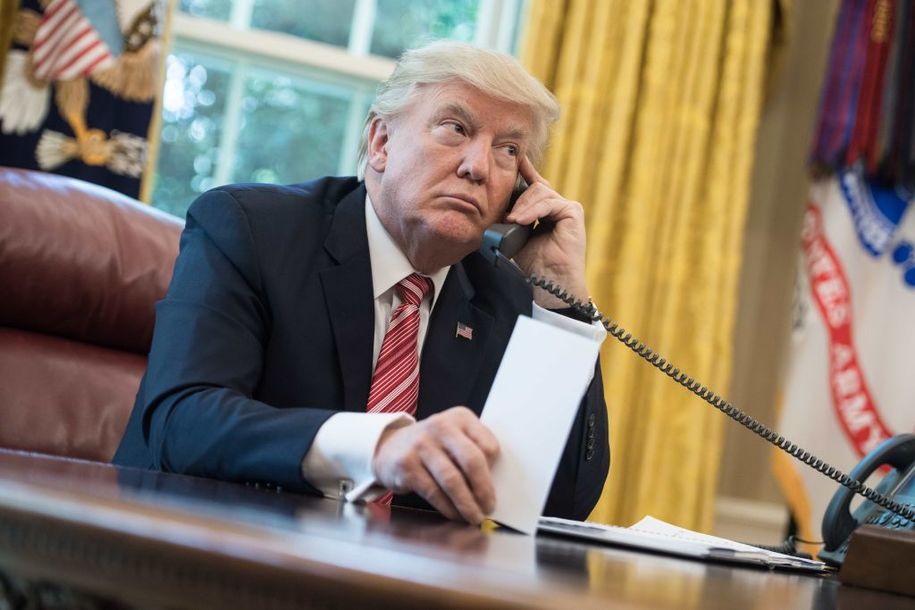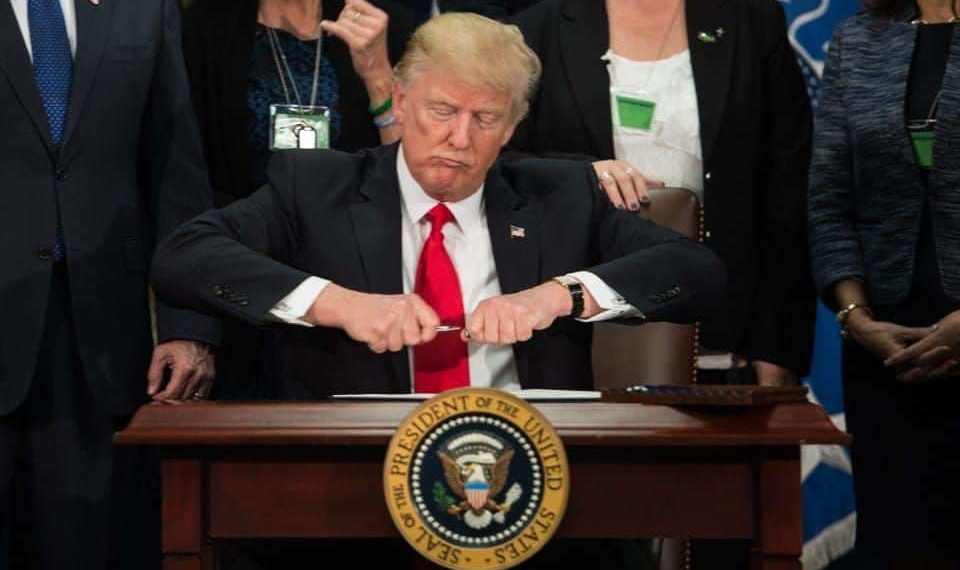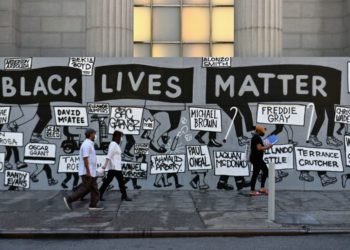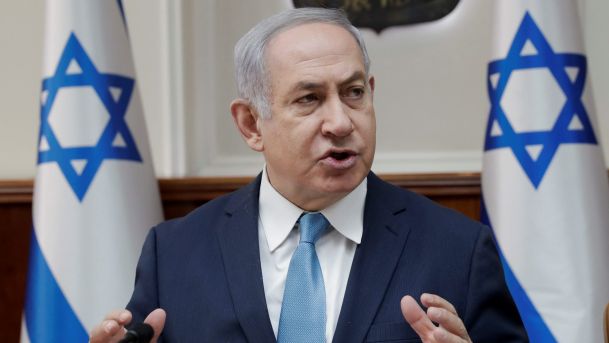Many pundits have spewed endless arguments and conjectures about Donald J. Trump’s intentions concerning his trade policy. Their evaluation is often premised on a vision of Trump as a national leader pursuing state interests inspired by traditional diplomatic and political tactics. This vision is dead wrong, and using it misleads the public on the nature of his actions, objectives, and ultimately the likely outcomes of his actions.
Rather, Trump’s political decision making is shaped by his career as a real estate mogul and businessman. If we want to understand Trump, we should look closely at his famous bestseller The Art of the Deal.
Trump has followed the book’s prescriptions to a T in executing U.S. trade policy, and beyond that, it has become the inspiration for his presidential style of problem-solving, both for domestic and international issues.
Think Big
In the book, Trump highlights bargaining strategies that have served his commercial real estate empire well. While these tactics are misplaced in the world of international relations, they have still galvanized his approach to trade. Understanding Trump’s strategies in real estate puts his trade policy (both in what has happened and what to expect) in clear perspective.
In The Art of the Deal, one of Trump’s keys to success is to Think Big. Indeed, no president has thought bigger on trade, given Trump’s decision to revamp every major trade agreement the U.S. is currently a party to. This goes beyond tweaking agreements through negotiation – we are talking about attempts to reconstitute the fundamental agreements themselves.
Trump has withdrawn the U.S. from the Trans-Pacific Partnership, has renegotiated NAFTA, and is in the process of restructuring trade relations with China, Japan, South Korea, and the European Union. He is also contemplating forging a new agreement with Britain after Brexit.
No president has ever seen such change on trade in his administration. It is the greatest upheaval in trade policy since the 1932 Smoot-Hawley Tariff Act that launched America into the Great Depression by strangling trade.
Maximize Options
This Think Big-principle complements another important Trump prescription: Maximize Options or what Trump would call “putting lots of balls in the air.” This formula better than any political theory or consideration explains why Trump is assailing every major trade agreement the U.S. currently holds.
….Remember, NAFTA was one of the WORST Trade Deals ever made. The U.S. lost thousands of businesses and millions of jobs. We were far better off before NAFTA – should never have been signed. Even the Vat Tax was not accounted for. We make new deal or go back to pre-NAFTA!
— Donald J. Trump (@realDonaldTrump) September 1, 2018
No model better accounts for this than a business model. Business thrives on volume. The gains multiply significantly when many deals are being negotiated. It also allows for diversification and thus minimizes net losses. Even if some deals go sour, the net gains can be pulled up by successes in other deals.
Indeed, with NAFTA and South Korea, the changes settled for in renegotiation brought America a number of gains on various fronts: from market access for U.S. automobiles to a watered-down trade dispute resolution. As each deal is concluded, Trump hopes to add to his collection of accommodations to U.S. trade interests.
In this way, the gains themselves are seen as profits for U.S. capture rather than a rationalization of institutions for mutual benefits.
Fighting Back Hard
Trump’s approach to negotiations on all issues, including trade, is one of “hardball.” This is a manifestation of his principle of Fighting Back Hard when confronted with unsatisfactory (what he considers unfair) outcomes. And make no mistake; his method is not one of collegial diplomatic engagement. It is rather in-your-face-bargaining.

The tone is always adversarial carried on under a vail of both implicit and explicit threats. The nuclear option (the U.S. doing its worst) is always presented as viable and always involves devastating outcomes (like revoking the agreements completely or imposing ruinous tariffs).
The word “fight” is apropos here. Trump’s approach is strictly zero-sum: you either win or lose. The fighting takes the form of a test of wills or what game theorists would refer to as a “game of chicken.” The game is well-known, and to play it well one needs to elevate perceived threats to such a level that an opponent will simply give in rather than facing the prospect of neither side giving in.
This is anything but an exercise in diplomatic decorum. And indeed, Trump has approached every one of his trade battles, and all his domestic battles for that matter, in the same vein.
On a domestic front, there is no more glaring manifestation of this than his willingness to shut down the government over the funding for the U.S.-Mexico border wall. In this case, Congress did not give in, and the result was mutual devastation for at least one month.
Using Leverage
Trump’s own brand of chicken is enhanced through his principle of Using Leverage, and in this respect, Trump wields the largest hammer on the planet in terms of trade. Against certain opponents, the size of the American market renders a game of a behemoth playing chicken with a moth: such is the case with South Korea, Mexico, Japan, and Canada.
But in games against the E.U. and China, while these nations are also great trading powers, the U.S. stills holds sway as a behemoth given their dependence on the U.S. market. Indeed, Trump is using that hammer with brute force from the bully pulpit of the American economy.
Future Trade Policy
What does this mean for future trade policy?
Games of chicken between participants who have a lot to lose rarely end up in mutual non-accommodation for very long. The declining growth of world trade in the last quarter of 2018, China’s declining trade, and the difficulties of rising prices for American consumers and businesses have all demonstrated the impoverishing effects of the trade wars, even in a nascent state. Moving beyond this will be ruinous.
As with the government shutdown, you can expect Trump to carry out his own brand of hardball close to the brink, or temporarily beyond the brink if other parties don’t capitulate. However, even then we can always count on the U.S. to make some sort of deal in the end.
Trump is a seasoned real estate developer. In that game, you posture hard, get everything you can, and then head to Mar a Lago.
Disclaimer: The views and opinions expressed here are those of the author and do not necessarily reflect the editorial position of The Globe Post.






















